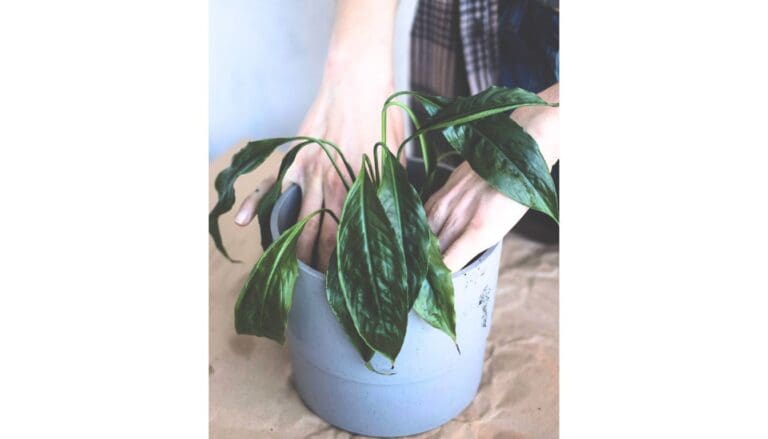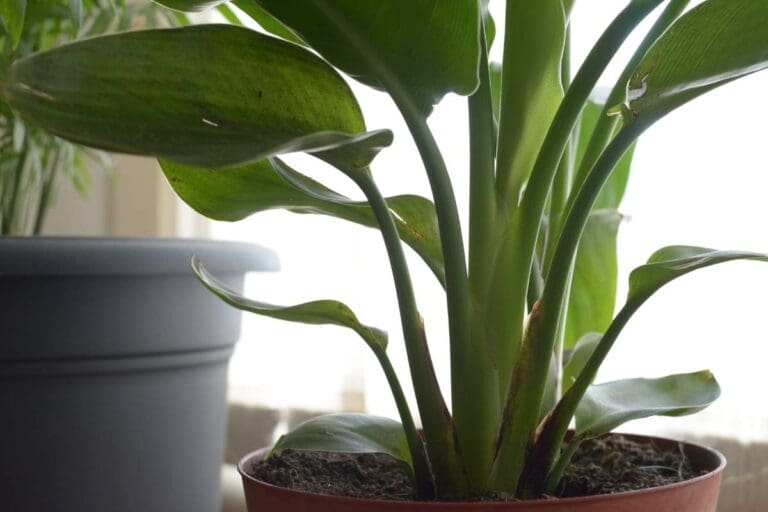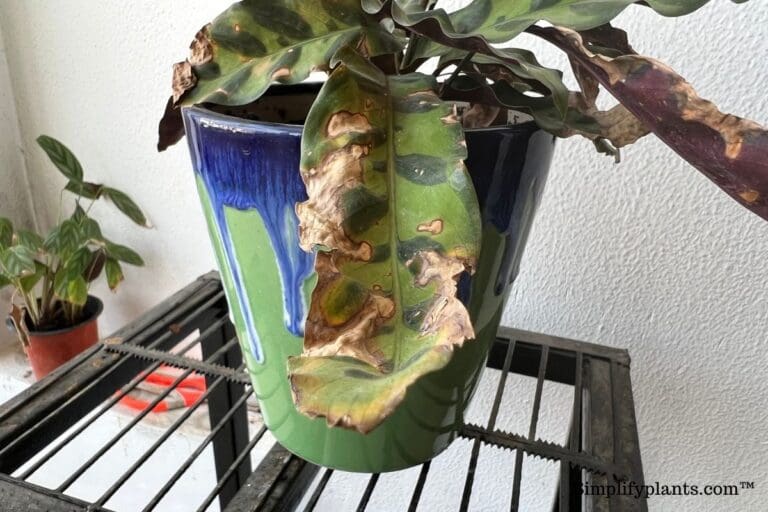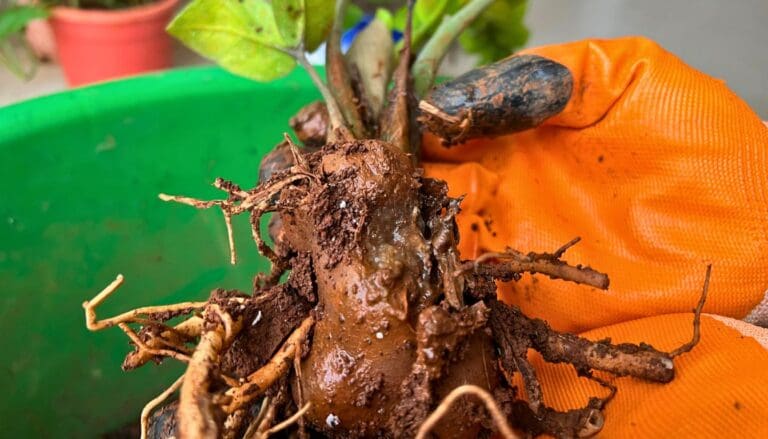Philodendron Light Requirements: Direct Sun, Low Light Or Shade?
Philodendrons are gaining popularity because of their unique glossy leaves and their air-purifying abilities. There are different kinds of climbing and non-climbing philodendrons, but you need to know what type of light suits them the best to keep them thriving. So, in this article, we will learn what kind of light a philodendron needs.
Philodendrons do best under medium-bright indirect sunlight. However, they are versatile plants that can tolerate various lighting conditions. When kept in low lighting conditions, their growth rate will be slower than usual. Make sure to keep them away from direct intense sunlight.
Keeping your philodendron in low light can result in leggy growth that will not look good. On the other hand, too much light will burn the leaves and make them yellow or brown.
Philodendrons can grow very fast if you can provide sufficient sunlight to them. However, wrong lighting conditions will adversely affect the health of the philodendron.
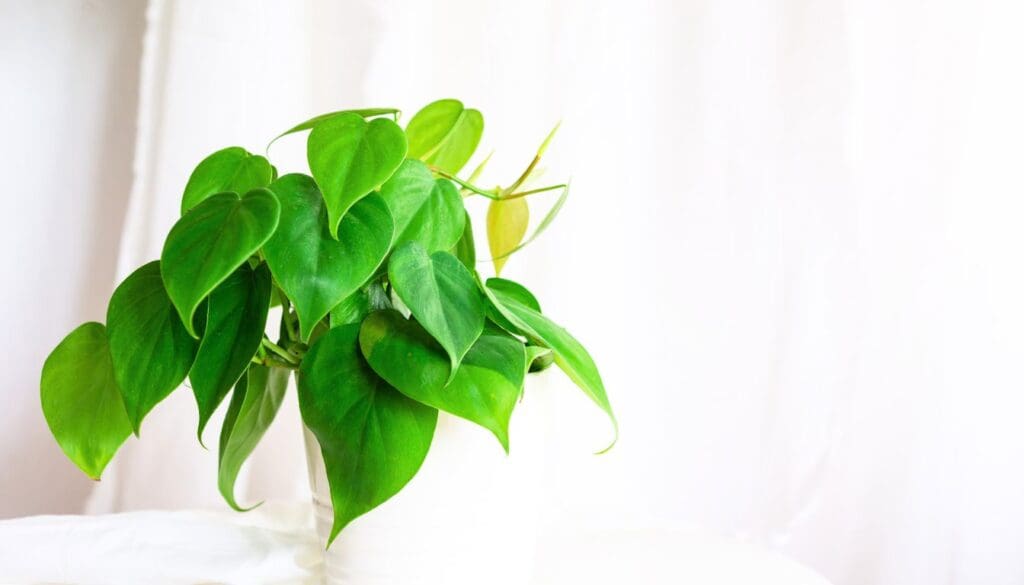
Please note: Simplify Plants is reader-supported. Some links in the post are affiliate links and I get a commission from purchases made through links in the post.
Importance of good lighting
The philodendrons require good lighting for good growth. Plants need light for all their daily activities that help them thrive and remain healthy.
Plants get their energy by performing photosynthesis which requires light, water, and carbon dioxide. Without enough light, the plant will not be able to produce sufficient food and energy.
Philodendrons can adjust very well to different situations, and low light is one of them. However, the growth will slow down if it doesn’t get enough sunlight.
If you keep the philodendron in low light for days, you will notice leggy and stunted growth.
What kind of light does a philodendron need?
One of the good things about philodendrons is that they can adjust to various conditions, but to see them in the best state, you must keep them in a bright area of the house with enough indirect sunlight.
While low light prevents the plant from growing to its full potential, too much light or direct sunlight might burn the leaves and dehydrate the plant.
Therefore, you need to find the right balance to keep your philodendron healthy and to see more growth in it.
Consider the following points to ensure that the philodendron gets the best lighting condition.
Exposure to sun

You should protect your philodendron from direct sunlight. Although philodendrons can tolerate low light conditions, they can easily get burnt if exposed to direct sunlight.
If you notice that the philodendron is getting exposed to direct sun, you should relocate it to another spot where it only gets indirect light.
You can keep your philodendron near a south-facing window where it will get enough light throughout the day. But make sure that it is not getting direct sunlight over there. Use a sheer curtain to filter the direct sun.
The direction of the sun
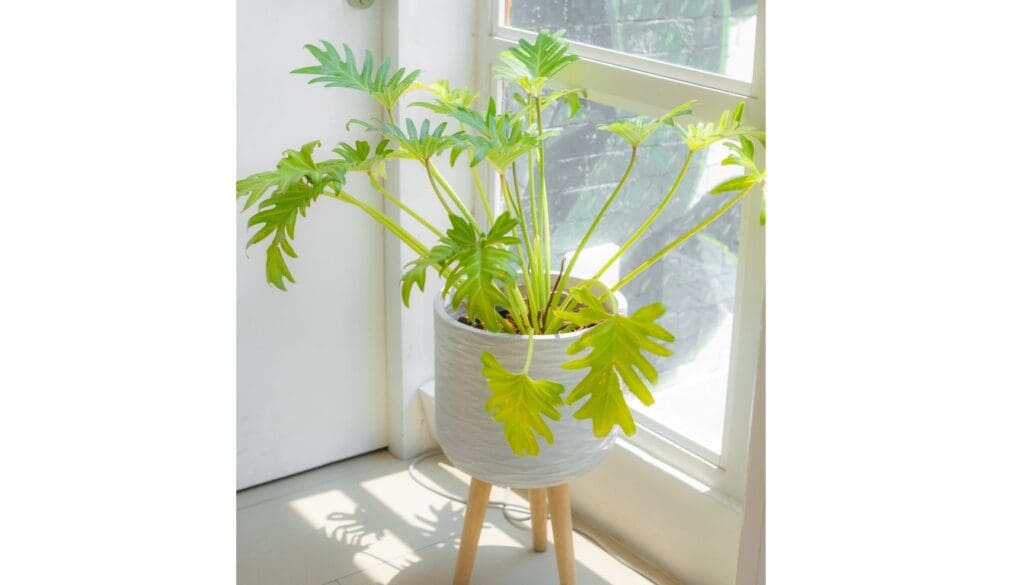
You must find out the direction of your house and then figure out the direction of the sunlight.
You can place your philodendron near an east-facing window where it can get the soft morning sunlight, but the sunlight moves away soon as the day progresses.
On the contrary, keeping the philodendron near the west-facing window will expose the plant to the harsh afternoon sunlight.
In its native tropical rainforests, the philodendrons take shade under canopies and avoid the harsh sunlight, so you need to find a spot for it that will not get direct sunlight.
A south-facing window will suit the philodendron the best but avoid keeping it too near the window. Place the plant a few feet away so that it gets indirect sunlight only.
Effect of low light
The philodendron can indeed tolerate and survive in low light conditions.
However, you should know that an extended period of low light will not benefit your philodendron. Instead, it will slow the growth, cause leggy growth, and weaken the plant in the long run.
You must remember all these while choosing the spot for the philodendron.
Summer vs. winter light
Like all other plants, the philodendrons become dormant during the winter season. This happens because the light’s intensity reduces during the winter times.
During the summer or spring, the daylight lasts longer, and the plants can synthesize more energy and food that helps in new growth.
In the winter season, the plants don’t get enough light as the days are smaller than the days in summer. So, the philodendron stays dormant and stores up energy to survive the winter.
You should not get worried if you don’t see any growth in your philodendron in winter, as that is natural.
You might not see any growth, but the philodendron stores energy that helps them to grow quickly in the spring and summer months.
Can philodendrons live in low light?
Yes, the philodendrons are famous for their adjusting abilities that allow the plants to survive in low light.
However, low light is not an ideal living condition for the philodendron and might cause leggy growth or stunted growth.
A bright area with indirect sunlight is perfect for your philodendrons.
Philodendrons not getting enough light.
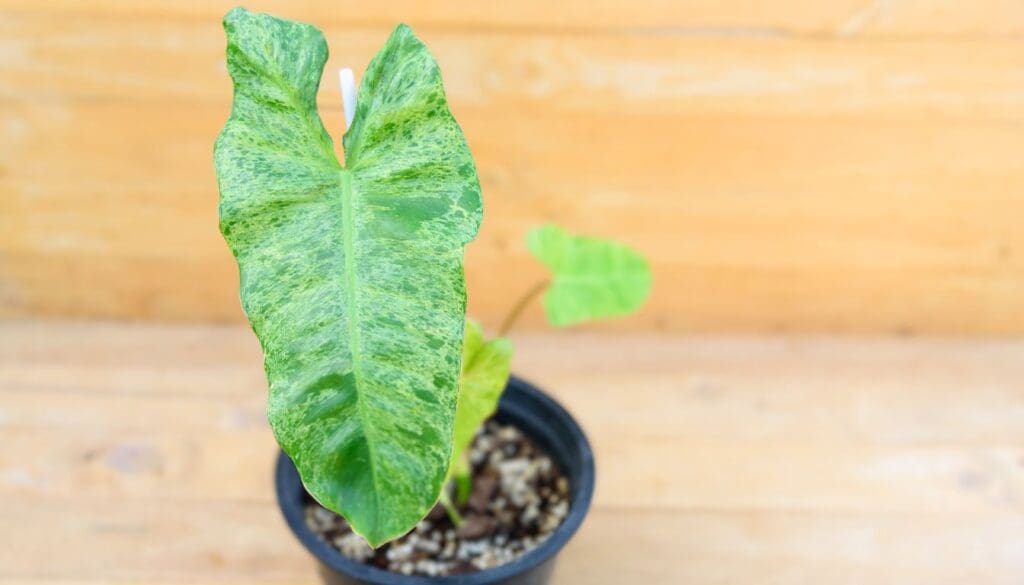
If your philodendron is not placed in a bright area, it might not get enough light.
If you have a room full of windows, you can place your philodendron in that room. Or, if there is a south-facing window in your house, you can set the plant there.
It is not a problem if you don’t have a south-facing window, as you can use any window that gets enough light and place the plant there.
However, if your house doesn’t have a natural light source, you will need to use artificial lights readily available online.
How do I know that my philodendron is not getting enough light?
Many plant lovers fail to understand the importance of light and leave their plants in low light. As a result, the plant develops different problems.
We’ll discuss some problems that are caused due to inadequate light.
Leggy growth
Let us understand what leggy growth is first. When the stems of your philodendron grow thin and long with a lot of gaps between the leaves, that is when you know that your plant is leggy.
This happens due to a lack of energy. When your philodendron doesn’t get enough light, it becomes weak as it cannot produce enough food or energy through photosynthesis.
Due to low energy, the plant cannot grow many leaves, and the stems start reaching out for more sunlight. This is why you see tall and thin stems with very few leaves on them.
This is not only unhealthy but makes your philodendron look bad.
Leaning
If you have a leaning philodendron, the reason can be low light. When your plant doesn’t get enough light, it starts looking for a light source.
So, you will notice that your philodendron might lean towards a light source such as a window or a door.
Sometimes the leaves of your philodendron start leaning towards the light there, as, at other times, the whole plant might begin leaning.
Besides moving your philodendron to a bright spot, you can rotate the plant after a few days to get light on all sides.
Small leaves
This is a common sign of low light. The philodendrons come with beautiful large leaves, so when you see the leaves getting smaller, you should check if your plant is getting enough light.
Light supports new growth, and if your philodendron doesn’t get enough of it, it will not grow to its full potential.
When there is a lack of light, there is a lack of energy. This is why you might see small leaves and foliage on your philodendron.
Slow growth

Philodendrons can survive low light, but it can cause slow growth in them.
You might not be able to see new growth if you keep your philodendron in low-light conditions for an extended period.
You should not worry about growth during the winter season, but if you don’t notice new growth in summer or spring, your philodendron is not getting sufficient light.
What to do if the philodendron is not getting enough light?
If your philodendron is not getting enough light, you need to follow the following steps to ensure that the plant remains healthy.
Use artificial lights
A lack of natural light in the house cannot stop you from keeping houseplants, and artificial lights are invented for this reason.
You can purchase artificial lights for grow lights online. You need to place your philodendron under this light and turn the light on.
These lights can be even more helpful during the winter months when light intensity reduces.
Watering
You should be very careful about watering your philodendron, especially if living in low-light conditions.
You need to cut down on watering as the soil will take longer to dry, so the plant will require less water than usual.
Fertilize
A nitrogen-rich fertilizer is ideal for philodendrons as it helps in faster growth.
However, when the plant is living in low light, you should consider the amount of fertilizer you give to your philodendron to ensure that it is not too much.
How do I know that my philodendron is getting direct light?
Although philodendrons are extremely versatile, they cannot tolerate direct sunlight.
Just as low light causes various problems to the plant, direct sunlight can damage the plant by causing sunburn.
When you place your philodendron in direct sunlight, its leaves get scorched and discolored due to the excess heat. There is no way to fix these leaves, so keeping your philodendron away from the direct sun is better.
What to do with a sunburnt philodendron?
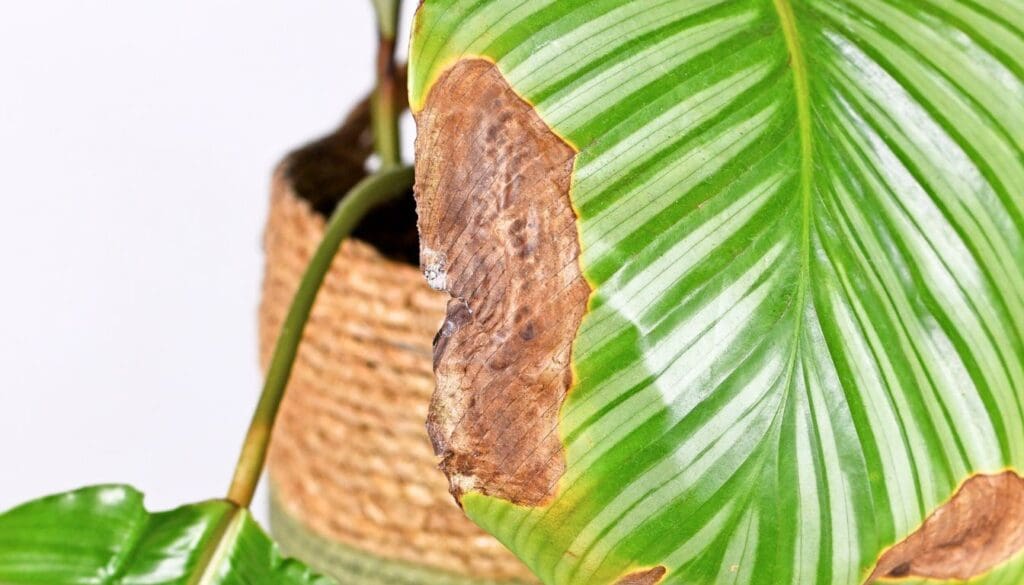
If the philodendron has crisp and discolored leaves, it probably means that the plant is sunburnt.
First of all, check if the plant has been getting direct sunlight. If so, relocate the plant to a place away from the direct sun where it gets only indirect sunlight.
Next, you need to prune the scorched leaves. Let the plant recover, and don’t expose it to direct sunlight again.
Final thoughts
Philodendrons are very easy to grow as they adjust to most situations very well. However, in ideal lighting conditions, these plants can thrive and grow very fast.
Philodendron can survive low light, but it will not have proper growth. Whereas, if it gets direct sunlight, its beautiful leaves will get sunburnt.
Therefore, ensure that you provide sufficient indirect light to your philodendron to see it in its best health.
Ref: Wikipedia.
Recommended Garden Supplies
| Product Image | Our Recommended Gardening Supplies | Check Offers! |
|---|---|---|
Top Top
Top
Top
Top
Top
Top
Top
Top | rePotme Houseplant and Tropical Classic Potting Soil Mix | Check Offer On Amazon |
 Top
Top
Top
Top
Top
Top
Top
Top | Espoma Organic Indoor Plant Food | Check Offer On Amazon |
 Top
Top
Top
Top
Top
Top
Top
Top | GooingTop LED Grow Light 6000K Full Spectrum Clip Plant Growing Lamp | Check Offer On Amazon |
 Top
Top
Top
Top
Top
Top
Top
Top | Soil Moisture Meter | Check Offer On Amazon |
 Top
Top
Top
Top
Top
Top
Top
Top | Govee Hygrometer Thermometer, Bluetooth Enabled! | Check Offer On Amazon |
 Top
Top | LEVOIT Humidifiers for Large Room(Best For Plants) | Check Offer On Amazon |
 Top
Top
Top
Top
Top
Top
Top
Top | Upgraded DIY Automatic Drip Irrigation Kit, 15 Potted Houseplants Support | Check Offer On Amazon |
 Top
Top
Top
Top
Top
Top
Top
Top | Stainless Steel Heavy Duty Gardening Tool Set | Check Offer On Amazon |
 Top
Top
Top
Top
Top
Top
Top
Top | Bonide Insecticidal Soap | Check Offer On Amazon |
 Top
Top
Top
Top
Top
Top
Top
Top | Bonide 32 oz Spray Neem Oil for Organic Gardening | Check Offer On Amazon |
 Top
Top
Top
Top
Top
Top
Top
Top | Garden Safe Fungicide | Check Offer On Amazon |

